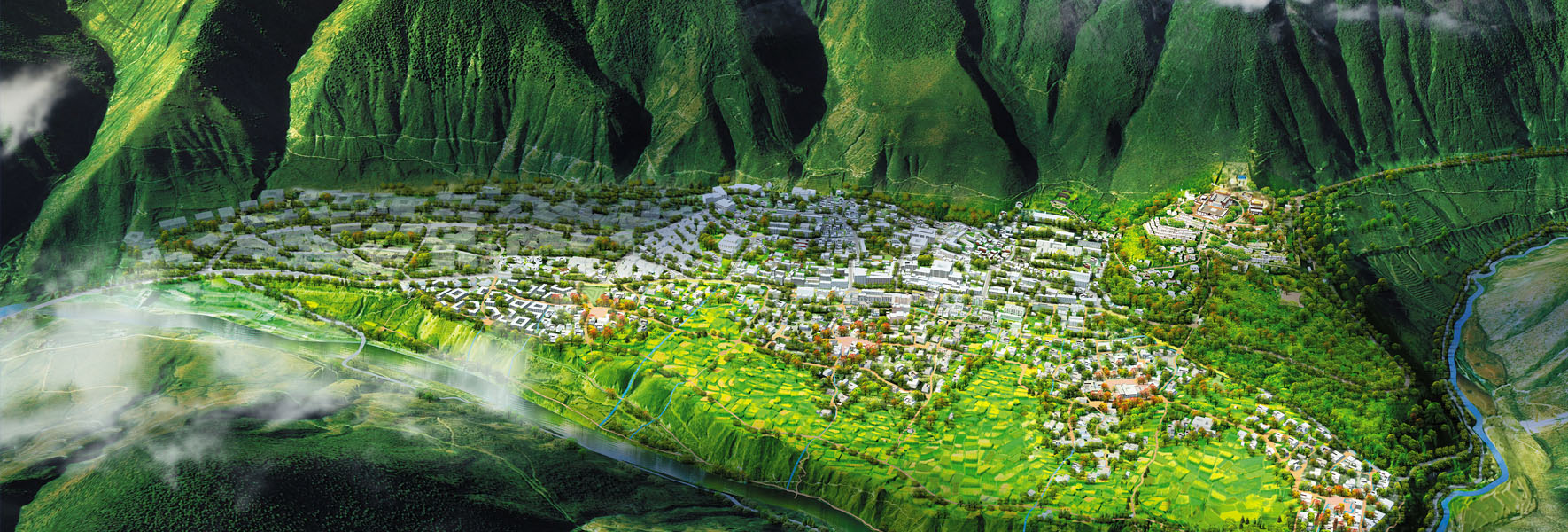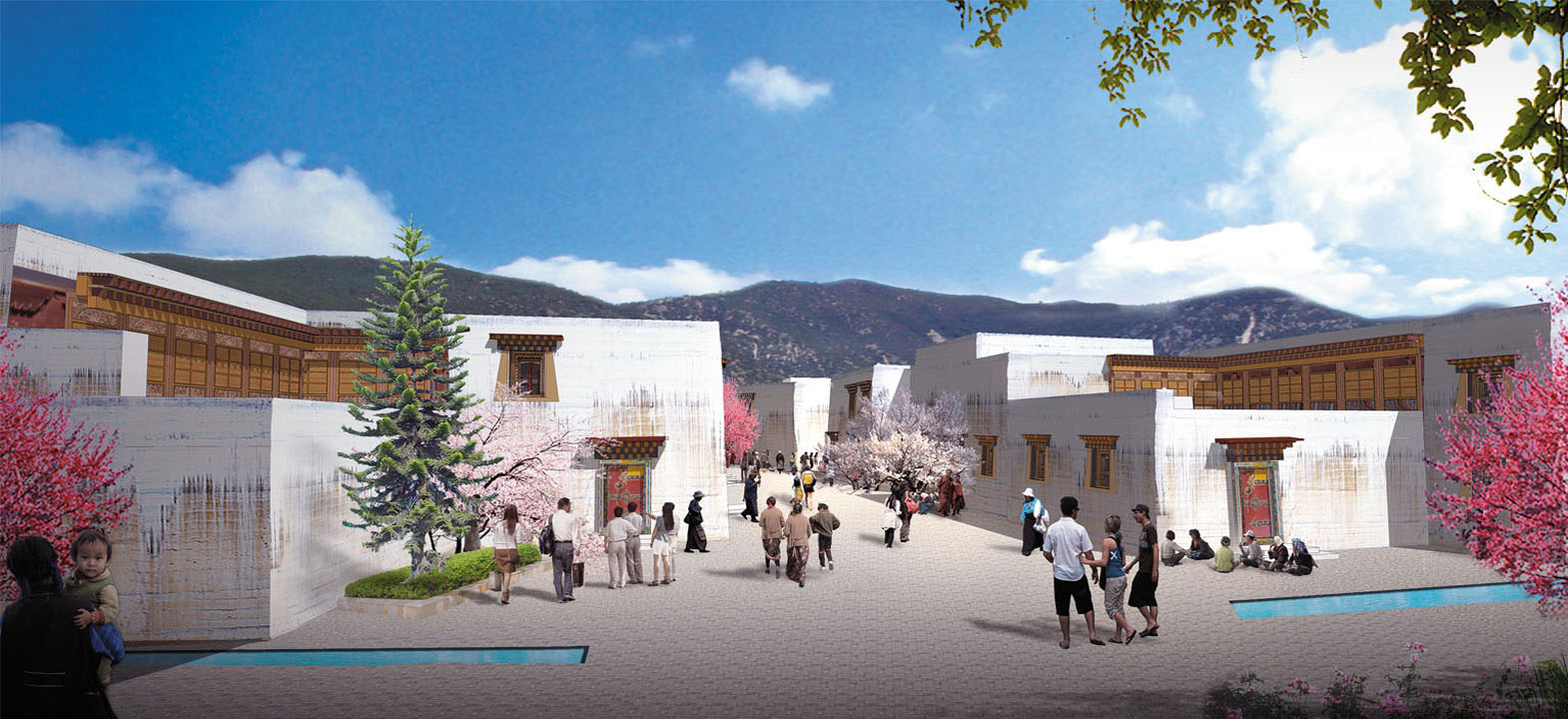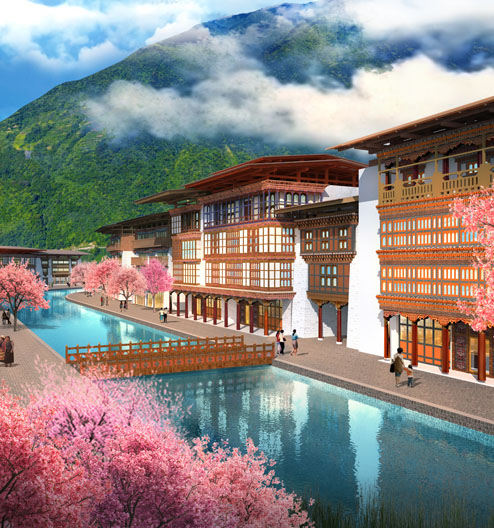Sichuan Ganzi Xiangbala international tourism town
Located in the middle of Xiangcheng county, Ganzi Tibetan autonomous prefecture, Sichuan province, Shambhala town is the political, economic and cultural center of Xiangcheng county, with an altitude of 2700-3760m. "Xiangbala" means "the place where gods live".
The power of nature and love has created a very distinct personality of the landscape of the Xiangcheng county. The mountains in the territory are from the north to the south, the majestic Shuoqu river, the Mayi river, and the Dingqu river, which rush down from the mountains and canyons, flowing for thousands of miles. Many mountains and lakes in different sizes are inlaid among the mountains and grasslands. The lake water is blue, clear and bottomless, surrounded by dense water grass and snow mountains, the local Tibetans call it the "Sky Lake"; the scattered primordial forest, mysterious canyons, magnificent snow mountains, grotesque karst caves, and plateau hot springs, all of which make people forget to leave, forming a unique and charming landscape of the countryside. Sangpi temple, one of the largest yellow temple in the eastern Tibetan area, was built here in 1654 A.D., adding a profound cultural background to Xiangbala town.
In the face of Xiangbala Town, which has a unique and beautiful natural landscape and rich cultural resources of Tibetan nationality, how to put forward a new characteristic plan according to the requirements of contemporary economic and social development? Chen Ke Shi and his team went deep into the fields, villages and local houses to gain a lot of first-hand information. The "white Tibetan house" is one of the "3 wonders" of Xiangcheng County, and is the most important cultural brand of Xiangbala town. Its unique Tibetan architecture is that the villagers have accumulated rich architectural practice experience in their long-term production and life. On the basis of architecture in Kangzang area, it integrates the architectural characteristics of Naxi, Han and other ethnic groups, forming a unique architectural style and architecture system compared with other parts of Kangba plateau and even the whole Tibetan area. The Tibetan dwellings in Xiangbala town embody their artistic characteristics in the composition of shape, color, decoration skills, and visual elements, and retain the basic characteristics of traditional Tibetan architecture, fully reflecting the organic unity of individuality and commonness.
Previously, the Xiangbala town mainly focused on developing passing tourism. Now, the three provinces and regions of Sichuan, Yunnan, and Tibet are jointly building a "great Shangri La ecotourism area", which is an important opportunity for Xiangbala town.
“Four girls’ hometown” under Bamu sacred mountain
Xiangbala, Xiangcheng County, Ganzi Prefecture, is located at the foot of Bamu mountain, one of the famous Tibetan mountains. Bamu means mother in Tibetan. Prof. Chen Keshi and his team designed four small villages combining regional characteristics and tourism industry, representing four daughters of his mother, and "four girls village" got its name. On this basis, it puts forward the brand positioning of Xiangbala Town - Siguniang Township under Bamu mountain. The design team established the construction goal of Xiangbala town composed of four "girl towns" as the international tourism town of Xiangbala, focusing on three design concepts:
The holy white Tibetan houses Culture of Kangba has the characteristics of rich historical accumulation, profound connotation, colorful form, rich local characteristics, and irreplaceable, unique and lasting human charm. As the main body of Kangba area, Ganzi Prefecture concentrates the essence of Kangba culture and embodies all aspects of Kangba culture. As a precious resource of Ganzi, Kangba culture has a very broad development prospect. With the combination of Kangba culture and magnificent natural landscape, the beauty with rich connotations is formed.
The poetic rural scenery Creates the environment image with the beautiful rural landscape and forest park as the main body, advocates the natural aesthetics, organically combines the green ecology and urban development, and builds a modern rural town. Respect and protect the existing water resources, forest resources, animal and plant resources, and integrate the urban development into the natural mountains, water, fields, and forests, to promote the infiltration of forest parks and rural landscapes into the town and form a unique urban landscape pattern.
The charming tourist town Takes the ecological and livable Tibetan style tourism town as the goal, actively expands the eco-tourism industry chain, focuses on the construction of pleasant living environment while developing the eco-industry. In the development of this small town, the application of green, low-carbon, and ecological technologies, integrated development of traditional industries with modern ecological technologies and minimize the impact of economic activities on the urban environment are the objectives. Combine reasonable planning and design with modern science and technology to create a green, low-carbon, comfortable and healthy production and living environment. Protect the natural ecology, pay attention to the humanistic care, and realize the harmonious coexistence of human, nature and city. Based on the cultural context, build a new city with a combination of resettlement and tourism.
Focus on form integrity and landscape priority
In the modern interpretation of the traditional architecture in Xiangbala Town, Prof. Chen Keshi and his team especially concern the application of the concept of form integrity and landscape priority in practical operation.
The concept of form integrity refers to a relatively prosperous state with stable structure, normal function, organic organization and open system of various elements within the urban space system under specific space-time conditions, which is characterized by the indispensable and harmonious relationship between various elements, reflecting a form composition principle of mutual existence, mutual correlation and overall organic. Xiangbala international tourism town will maintain the integrated form and traditional culture of the old town, and increase public and service buildings. While maintaining the original style of the natural landscape, it can meet the needs of supporting functions for development and build a new ecological town with a beautiful environment and convenient life. With the goal of an ecological and livable Tibetan style tourism town, actively expand the eco-tourism industry chain, pay attention to the construction of a pleasant living environment while developing the eco industry, and realize the integration of industry and town, and an interactive urban environment.
The use of landscape language in urban design plays an important role in optimizing urban functions and extending urban context. Compared with the traditional urban design, the urban design with landscape language can restructure the relationship between urban structure, improve the quality of human settlements, and correctly the relationship between urban tradition and innovation. Xiangbala international tourism town takes the earth landscape as the background, adheres to the principle of coordinated development with the mountain, retains the natural landscape of Bamu mountain, and develops harmoniously with the town. Starting from the overall structure, for the important core and nodes, along with the Shuoqu river system to create a pleasant landscape, put natural landscape into the town, to create an overall and integrated landscape environment. With the earth as the background, keep the natural terraces, follow the coordinated development with nature, create the urban green landscape, and add a beautiful scenery line for the town.
Five functional areas
In terms of spatial form design, the town is divided into five areas: Sangpisi temple area, Daguniang area, Erguniang area, Sanguniang area, and Siguniang area. Sangpi temple area is a religious and cultural area, which is located at the highest point of the site. In the design, the area of luxury hotels and serviced apartments will be placed to meet the needs of high-level consumers with their excellent vision. And the design of the city wall increases the sense of the importance of the Sangpi temple area, highlighting the solemn and sacred religious significance.
Daguniang area is a Xiangbala ethnic area. In future planning, it will become a gathering place for commercial shopping and traditional handicraft workshops. In the architectural design, try to make the building meet the commercial needs, while ensuring the artistry, so as to avoid over-commercialization. Most of the buildings in Daguniang area are rammed earth structure with local characteristics, generally ordinary residential houses; there are a small number of concrete brick and wood and other simple structures, most of which are newly added for storage and livestock shed.
The Erguniang area is a health resort area, with resort hotels, health clubs, boutique inns, Tibetan baths, and spa. The whole architectural planning attaches importance to moderation. The current situation of buildings in Erguniang area is mostly traditional Tibetan rammed earth structure, a small part of concrete, brick and wood and other simple structures, with low building density. Suitable for planning as a high-level health hotel or club with high comfort requirements.
Sanguniang district is the Xiangbala catering and leisure area, which provides entertainment, catering and performing arts as the main functions. It takes the entrance square, catering street, bar street, central square, etc. as the main landscape axis, and integrates the characteristics of Tibetan folk customs. The current situation of buildings in Sanguniang area is mostly traditional Tibetan rammed earth structure, a small part of the concrete, brick and wood and other simple structures, with low building density. Provide entertainment, catering, performing arts, etc.
Siguniang area is an art distribution area with low building density. Most of the buildings are of traditional Tibetan rammed earth structure, a small part of concrete, brick and wood and other simple structures. After transformation, it will be used as a tourist distribution center. A large number of new buildings will be added in the design area to increase the building density to ensure the capacity of tourists.
Among the above four areas, the buildings with complete structure and traditional Tibetan style are preserved in the design; the buildings with intact structure but modernized facade are reconstructed; the buildings with no artistic value or obstructing roads and other public spaces are demolished to ensure the over form integrity.





